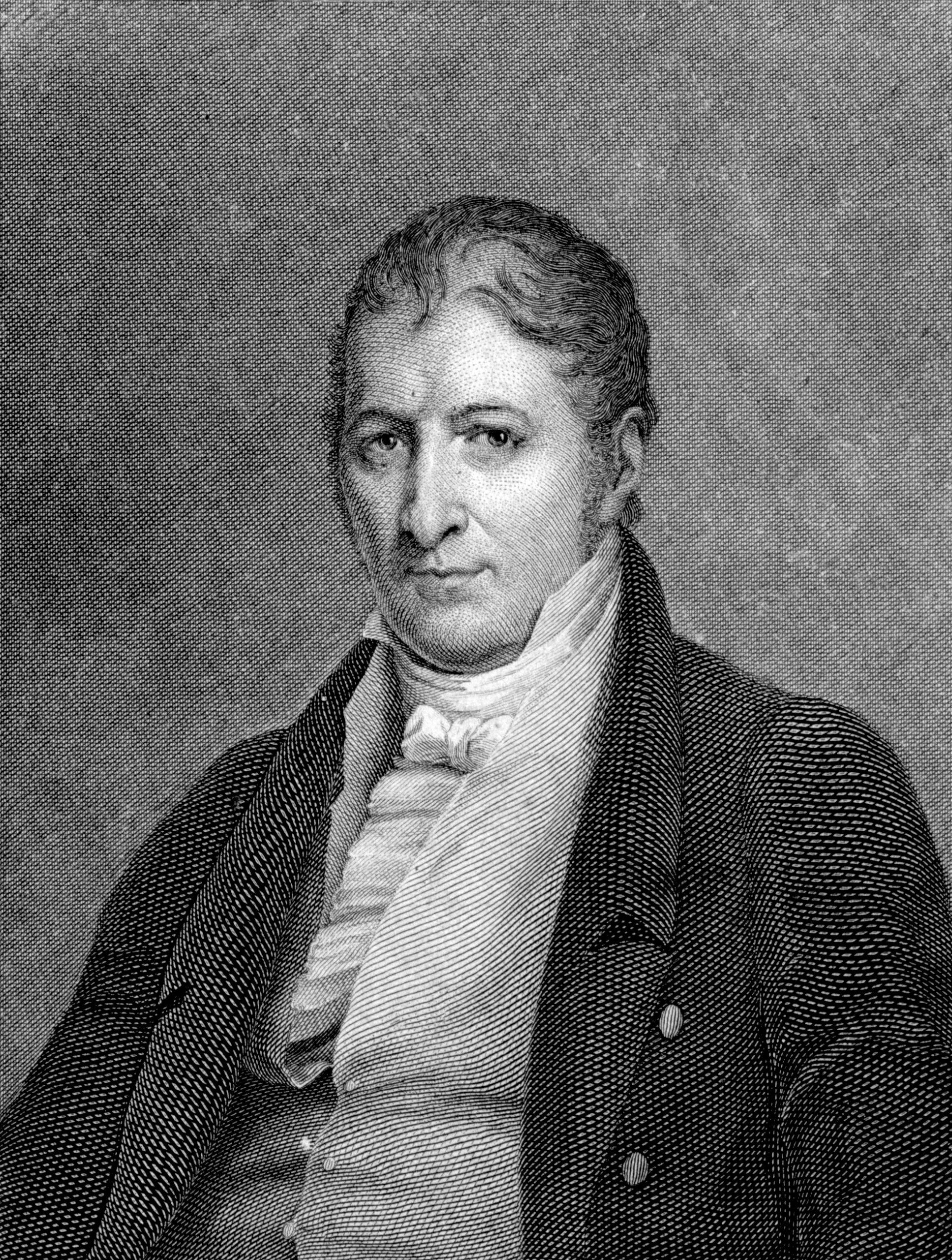
Eli Whitney - The Cotton Revolution
Are you wondering how and when mass production began? Before Henry Ford started assembling cars, someone had already come up with the idea of standardizing parts and making replacements. Before that, someone had built a machine that allowed the Americans to produce cotton on a large scale. That someone was Eli Whitney, an American boy from Massachusetts.
Eli was the eldest child of wealthy farmer Eli Whitney Sr. and his wife Elizabeth Fay. He was born December 8, 1765 in Westboro, Massachusetts, where his parents were from. With a passion for business and mechanics, he quickly began making money on his own.
He made his first profitable invention in his father's blacksmith shop - it was a device for making nails for sale. Soon this tall, stocky, meek boy also became the only manufacturer of women's hairpins in the area.
Eli was fourteen at the time and wanted to study, preferably at Yale. However, the family opposed this idea, according to which the boy had to take care of the household, which, in the end, brought a considerable income. So it worked like servant boy Oraz teacher at school. In the end, the money saved allowed him to start course at Leicester Academyy (now Becker College) and get ready to start the school of your dreams. In 1792 engineering degree from Yale University he left his homeland and went to Georgia, South Carolina, where he was supposed to work tutor.
The job was waiting for the young teacher, but the rest of the offers turned out to be a scam. He was assisted by Katherine Green, the widow of American Revolutionary General Nathaniel Green, whom he met during a trip to Georgia. Mrs. Green invited Whitney to her plantation in Rhode Island, which was a turning point in her future career as an inventor. He ran a plantation in Rhode Island. Phineas Miller, a Yale graduate a few years older than Whitney. Miller befriended the new capable linebacker and later even became his business partner.
Fight for your rights and money
Katherine Green had another idea to use the visitor's design skills. She introduced him to other manufacturers and persuaded him, relying on his sense of rationality, to look at the work of separating cotton fiber from grain. With the methods that existed at that time, no more than 0,5 kg of cotton could be obtained for ten hours of work, which made the plantations unprofitable. At the request of the mistress, Whitney visited the farms and observed the cleaning of cotton.
He noticed that the slaves working with cotton quickly made the same movements: with one hand they held the grain, and with the other they tore the short fibers of soft cotton. Whitney design bawełny dissertation she just imitated manual work. Instead of a hand holding the plant, the inventor made a sieve with an oblong wire mesh to hold the seeds. Next to the sieve was a drum with tiny hooks that, like a comb, tore off the cotton fibers.
The rotating brush, moving four times faster than the drum, cleaned the cotton from the hooks, and the grains fell into a separate container on the opposite side of the machine. In this case Instead of half a kilo of cotton a day, Whitney's cotton gin processed as much as 23 kilos, quickly becoming the most coveted piece of equipment on any plantation, multiplying production and profits many times over.
Before Eli Whitney got patent for his invention in 1794 (2), unlicensed copies of the cotton gin were in the machine park of many farms. And their owners were not going to pay a dime for Whitney's idea, arguing that the device was actually so banal and easy to implement that they made the car themselves. Indeed, some of these devices have indeed been significantly improved compared to the original made by the inventor, although the principle of operation has remained unchanged.
Gaps in patent law made it difficult for Whitney to defend his rights as an inventor, and the courts were often ruled by the manufacturers themselves - as you might guess, completely uninterested in paying high fees for using the patent. Profits from the sale of cotton gins manufactured in factory co-founded by Whitney and Miller, have been largely absorbed by the costs of processes with manufacturers.
2. Patent drawing of a cotton spinning machine.
The partners were willing to sell the rights to the invention to state governments where cotton was grown. Thus, they will be paid, and the ginner will become the public property of the state. But manufacturers were not willing to pay for that either. However, the state of North Carolina has imposed a tax on every cotton gin in its area. This idea was implemented in several more states, which brought the inventor and his partner about 90 thousand. dollars, making them rich people at that time, although if the patent rights were respected, the wealth would have been much greater. However, gardeners soon did not have to worry about the claims of the developer. Whitney's patent has expired.
On the whole, the cotton gin turned out to be an extremely important, even revolutionary invention, which cemented the position of the United States as the main supplier of cotton to England. While in 1792 the United States exported only 138 pounds of cotton, two years later it was already 1 pounds. Never before has an invention had such a profound effect on cotton production. Eli Whitney was well aware of the economic importance of the gin and the scope of the project. In a letter to fellow inventor Robert Fulton, he described his situation: "I wouldn't have a problem enforcing my rights if they were less valuable and only used by a small part of the community."
Muskets and spare parts
Discouraged by the lawsuits and the lack of prospects for a fair reward for the patented device, Eli left for New Haven to work on new inventions that were more profitable and, most importantly, more difficult to copy.
It turned out to be an inspiration for new projects Alexander Hamilton's Manufactory Report. The creator of the US dollar argued there that the basis of the American economy is industry, not agriculture or trade. In the document, he also drew attention to the production of weapons for the US military. It was at the beginning of the XNUMXth century when Whitney, fascinated by the content of the Hamilton report, made an offer to the table of Oliver Wolcott, Secretary of the Treasury, for the army. He was forty years old, lanky and still full of ideas.
This time, keeping in mind the experience of the South, the inventor began negotiations with the coordination of financial issues. After several fairs, he signed a contract. And the contract was for the supply of 10 thousand. muskets for $13,40 each.
The weapon was supposed to be delivered within two years, and the manufacturer undertook to provide additional spare parts. For the first time, the government has entered into a contract that allows production to be started on the basis of uniform components that fit together and can be easily replaced with new ones if necessary. Until now, each rifle was handcrafted, from stock to barrel, and its parts were unique and did not match other weapons of the same model. For this reason, they proved difficult to correct. On the other hand, Whitney's muskets could be repaired quickly and almost anywhere.
3. Whitney Gun Factory in 1827
he proceeded to fulfill the order in a big way. After returning from Washington to New Haven, friends helped him financially by issuing bonds worth $30. dollars. Whitney also took out a loan of $10. dollars. He didn't have any major problems with it, as government order in the amount of 134 thousand dollars was then a huge financial operation on a national scale. With money in his pocket, the designer planned the production process, designed and built the necessary machines.
Among the necessary devices, it lacked a mechanism for cutting metal, which would speed up the work of workers and guarantee the manufacture of perfect elements in accordance with the pattern. So he invented and built milling machine (1818). Whitney's invention functioned unchanged for a century and a half. In addition to rotating the cutter, the machine moved the workpiece along the table.
Whitney Factory it was well thought out and executed, but the production itself did not go according to plan. At the end of the year, the designer had only five hundred muskets instead of four thousand. pieces are guaranteed in the order schedule. As if that wasn't enough, Oliver Walcott was replaced by new Treasury Secretary Samuel Dexter, a Massachusetts lawyer skeptical of any technical innovation, and Whitney was still late on her contract (3).
The contract saved the president Thomas Jefferson. The idea of spare parts was familiar to him. He was able to appreciate the innovation of this vision. Eli Whitney received additional government guarantees and could continue to manufacture his muskets. True, it took him years to fully fulfill the contract, and many times he had to correct or improve various things in his factory. For this, another state order, for 15 thousand. he had delivered the muskets just in time.
Whitney's new production technology began to be used not only in arms factories, but also in other industries. Following the idea of using interchangeable parts, clocks, sewing machines and agricultural devices have been developed. Eli Whitney revolutionized manufacturing in the United States, and efficient machines solved the shortage of skilled craftsmen. Whitney's system guaranteed that an element made by an unskilled worker, but using machines, would be as good as an element made by an experienced mechanic.
Appreciate employees
The inventor died in 1825 at the age of 59 (4). Although his focus was on technical and industrial development, he also established himself as a public figure. To make muskets, Whitney built the town of Whitneyville, located in present-day Hamden, Connecticut. To attract and retain the best talent, Whitneyville offered, in addition to work, conditions unheard of at the time for workers, such as free housing and education for children.
4. Eli Whitney Memorial at New Haven Cemetery.

